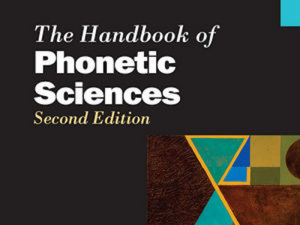As we should already know: in machine learning it is essential to evaluate a model on data that it was not learned from.
Young et al: Token Passing
My favourite way of understanding how the Viterbi algorithm is applied to HMMs. Can also be helpful in understanding search for unit selection speech synthesis.
Holmes & Holmes – Chapter 10 – Front-end analysis for ASR
Covers filterbank, MFCC features. The material on linear prediction is out of scope.
Sharon Goldwater: Basic probability theory
An essential primer on this topic. You should consider this reading ESSENTIAL if you haven’t studied probability before or it’s been a while. We’re adding this the readings in Module 7 to give you some time to look at it before we really need it in Module 9 – mostly we need the concepts of conditional probability and conditional independence.
Sharon Goldwater: Vectors and their uses
A nice, self-contained introduction to vectors and why they are a useful mathematical concept. You should consider this reading ESSENTIAL if you haven’t studied vectors before (or it’s been a while).
Taylor – Chapter 3 – The text-to-speech problem
Discusses the differences between spoken and written forms of language, and describes the structure of a typical TTS system.
Taylor – Chapter 8 – Pronunciation
Including how the lexicon is stored, letter-to-sound, and compressing the lexicon.
Holmes & Holmes – Chapter 5 – Message synthesis from stored human speech components
Pitch-synchronous overlap-and-add (PSOLA) remains a key technique in speech signal processing.
Handbook of phonetic sciences – Ch 20 – Intro to Signal Processing for Speech
Written for a non-technical audience, this gently introduces some key concepts in speech signal processing.
Ladefoged (Elements) – Chapter 8 – Resonances of the vocal tract
A more detailed look at how resonance occurs in the vocal tract, and how that can be used to explain the sound quality (e.g. formant frequencies) of vowel sounds.
Ladefoged (Elements) – Chapter 7 – The production of speech
Some phonetics at last, and a first encounter with the source-filter model of speech.
Ladefoged (Elements) – Chapter 6 – Hearing
Some understanding of human hearing will be helpful for engineering suitable features to extract from the waveform for automatic speech recognition.



 This is the new version. Still under construction.
This is the new version. Still under construction.